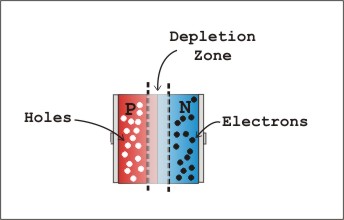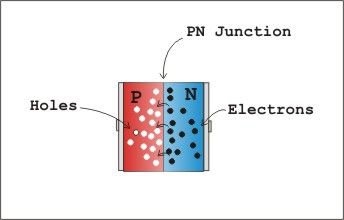Lesson #2 LEDS (light-emitting diodes)
We see them everywhere now, ever since Audi revolutionized the automotive world with the A5 and its brilliant LED’s no other major car company–except BMW’s Halo lights–was in their league in terms of looks! Well we are going to go back to chemistry class and learn about how these brilliant and innovative lights work!
I really don’t want to confuse anyone to begin with so I’ll try my best to skip the more detailed parts….hopefully! So in essence a LED is formed between two intrinsic or extrinsic (contains impurities) semiconductors, a n-type and p-type. When these two semiconductors are put together they form a junction called a P-N junction (predictable name). The P side is dominated by positive charged “holes” where as the n type has a high negative charge density. The junction created by the two semiconductors serves as the determinate for current flow. Look at the figures below (provided by imagesco.com)!
Now we are getting to the important part of this subject! The electrons want to fill the holes on the P side of the junction, but in order to do that they have to overcome the energy barrier in the junction in order to make it on the other side. The electrons are currently in a lower energy level, but as they make their transition through the junction they release energy equal to that band-gap in the form of photons in order to move across (they move when a voltage is applied to overcome the energy barrier). This energy goes into emitted infrared or visible light in LED’s. The most common semiconductors used are Silicon (Si) or Gallium (Ga), in order to get different colors the chemical composition is changed with the addition of various compounds most including phosphorus. So LED’s are graded on their specific wavelengths and intensities based on the materials used to make them. Since LED’s don’t have any moving parts it reduces their chance of being damaged due to vibration or shock and are also heat resistant 200K/watt. 
 So in short that is how those LED’s most of us have on our cars work, I know a lot of scientists and engineers might have something to say about the choice of words I used to describe the processes, but hey I got my Chemistry degree I can say whatever I want right! The application list for these parts is extensiv
So in short that is how those LED’s most of us have on our cars work, I know a lot of scientists and engineers might have something to say about the choice of words I used to describe the processes, but hey I got my Chemistry degree I can say whatever I want right! The application list for these parts is extensiv
“rice” their rides by going on an LED frenzy! There are some applications where the traditional halogen light bulbs still look better then their newly popular LED sisters.
Riced OUT NISSAN







